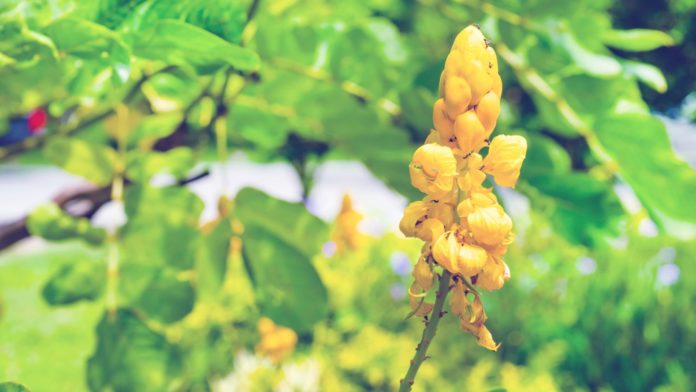Wild Senna (Senna hebecarpa) is a native perennial plant that adds beauty and ecological value to gardens and natural landscapes in Ohio. With its striking yellow flowers and attractive foliage, this plant not only enhances visual appeal but also provides habitat and food for various pollinators. In this comprehensive guide, you will explore the history, characteristics, growing requirements, care tips, and interesting facts about Wild Senna.
History and Characteristics
- Wild Senna is native to North America and belongs to the Fabaceae family. It is commonly found in Ohio and other regions across the United States.
- This perennial plant features compound leaves with several leaflets arranged along a central stem. The leaves are bright green and give the plant a lush appearance.
- The flowers of Wild Senna are vibrant yellow and arranged in tall spikes, adding a splash of color to the garden. They attract bees, butterflies, and other pollinators.
- As a legume, Wild Senna has the ability to fix nitrogen in the soil through a symbiotic relationship with nitrogen-fixing bacteria. This improves soil fertility and benefits neighboring plants.
Growing Requirements
- Light: Wild Senna thrives in full sun to partial shade. It prefers at least six hours of direct sunlight each day for optimal growth and flowering.
- Soil: It prefers well-draining soil but can tolerate a range of soil types, including clay and loam. However, the soil should be fertile and rich in organic matter.
- Watering: Once established, Wild Senna is relatively drought-tolerant. However, regular watering during dry spells and in the early stages of growth is beneficial for healthy development.
- Temperature and Hardiness: It is hardy in USDA zones 3 to 9, making it well-suited for the Ohio climate.
- Planting: Spring is the best time to plant Wild Senna. Sow seeds directly in the garden or transplant young seedlings. Ensure good seed-to-soil contact when planting seeds.
- Mulching: Apply a layer of organic mulch around the base of the plants to conserve moisture, suppress weed growth, and regulate soil temperature.
Care and Maintenance
- Watering: Wild Senna has moderate water needs. Water deeply and infrequently, allowing the soil to dry out slightly between waterings.
- Fertilizing: Wild Senna generally does not require heavy fertilization. However, incorporating organic compost into the soil during planting can provide a nutrient boost.
- Pruning: Prune back the stems in early spring to promote bushier growth and encourage new flower production. Deadheading spent flowers can extend the blooming period.
- Pests and Diseases: Wild Senna is relatively resistant to pests and diseases. However, keep an eye out for common issues such as aphids or leaf spot diseases and address them promptly using organic methods if necessary.
Interesting Facts
- The seeds of Wild Senna are often consumed by various bird species, contributing to their diet and supporting local bird populations.
- Native American tribes historically used Wild Senna for medicinal purposes, including treating fevers and digestive ailments.
- The plant’s bright yellow flowers serve as an important nectar source for butterflies, bees, and other pollinators, supporting their populations and promoting biodiversity.
Conclusion Wild Senna (Senna hebecarpa) is a captivating native perennial that brings beauty and ecological benefits to Ohio landscapes. By understanding its history, characteristics, growing requirements, care tips, and interesting facts, you can successfully cultivate and appreciate the splendor of Wild Senna in your own garden. Embrace this remarkable plant and create a haven for pollinators and wildlife.
Stay connected with Colin Can Help:
🌐 For Services: www.colincanhelp.com
Facebook: Colin Can Help on Facebook
Instagram: @colincanhelp
TikTok: @colincanhelp
YouTube: Colin Can Help on YouTube
LinkedIn: Colin Can Help on LinkedIn
Twitter/X: @colincanhelp
Threads: @colincanhelp
If you enjoy our content and want to support us in creating more, check out my author profile on Amazon and grab some books for yourself and your loved ones: amazon.com/authors/colincanhelp. Your support helps us keep creating!







